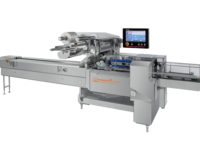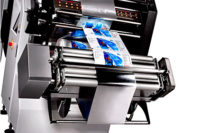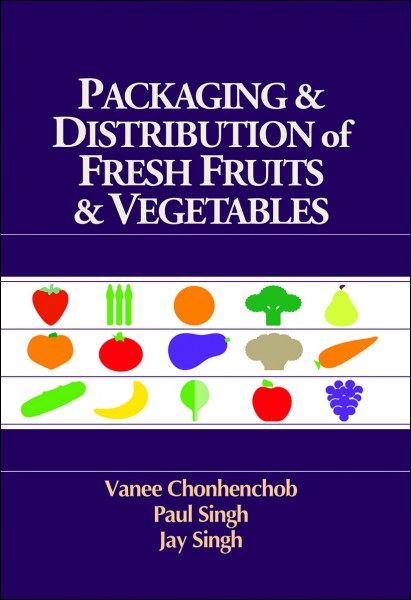A look at sustainable packaging








Over the last decade, the paperboard industry has seen sustainable practices go from the occasional application to the industry standard, achieving new benchmarks in packaging innovation. As bakers and snack food manufacturers deliver on the broader promise of sustainability, the industry is manufacturing packages that reduce the product-to-package weight ratio, increase shipping efficiencies and launch more environmentally friendly materials.
Sustainability is a balance between environmental and social stewardship and economic practicality. Cost, performance and environmental and social impacts must all be managed, beginning with packaging design and specifications and moving to manufacturing, distribution and the end of life of a material.
Kyla Fisher, corporate sustainability director at PaperWorks Industries Inc., a Philadelphia-based integrated packaging supplier, takes a look at some of the current material trends and how the overall manufacturing process can be managed to achieve sustainability, and examines the importance of accurately measuring results.
Materials matter
Q: Are you seeing an increased demand for certain types of sustainable materials?
A: Absolutely. Our customers are asking for higher percentages of post-consumer-recycled (PCR) content in paperboard than ever before. Many of the Fortune 1000 have set the goal of increasing PCR content in their materials and are looking for suppliers that can help them achieve a gradual increase over the next decade. In addition, some customers are looking for completely plastic-free and additive-free packaging solutions to address consumer concerns around estrogenic compounds leaching into food and beverage products as well as at end-of-life disposal.
We are seeing more requests for biodegradable film in windows on cartons and in blister packs. However, the industry is still exploring the limits of biodegradable materials, looking to see how these materials will be handled in the recycling stream and if our current collection and waste systems are adequately set up to handle degradable materials.
Q: Can you give us an update on the materials’ regulatory front? Are there any new issues on the horizon?
A: One issue on our radar is in the European Union, where there is growing sensitivity over chemical use in consumer products. Recently, there has been concern regarding the potential risks associated with mineral oil in food packaging. It has been argued that mineral oil saturate hydrocarbons (MOSH), which may be found in recycled packaging, are migrating out of the paperboard into other products. Concern over MOSH is a relatively new development that is still being addressed; however, the science behind the claims is being contested. The EU has deferred regulating MOSH until it has developed a more comprehensive process to assess the true impact of chemicals in food packaging.
It’s a situation that we in North America are watching carefully. Recently, the U.S. has started looking at its own chemicals act, and the packaging industry is investigating the use of software tools to help measure the environmental effect of chemicals used in packaging. I’m sure this will drive increased focus on chemicals found in all of our materials and processes over the next decade.
Sustainable processes
Q: Beyond using recycled packaging materials, what is your company doing to take the lead on sustainable packaging?
A: When it comes to sustainable packaging, there are two key services our customers are looking for. They are seeking a partner to help them identify sustainability cost savings and promote sustainable packaging. In addition, they want to know that their supply partners internally implement sustainable processes themselves.
My role at PaperWorks is two-fold. Internally, I work with our production and plant staff to maximize our resource use. This includes tracking greenhouse gas emissions, exploring ways to reduce energy use and minimizing waste through recycling programs. I also work alongside our innovation, design and sales teams to help customers develop better packaging, going beyond simply promoting sustainable materials.
We work directly with customers at the design stage to see the whole picture and provide the most sustainable options for their packaging. This might mean looking beyond package design to identify more efficient production practices or transportation logistics. By offering training, packaging assessments and design and engineering expertise, we help customers understand the complexities involved in creating more sustainable options for their packaging.
Our own sustainability efforts are paying off in various ways. For example, we expect to see some significant cost savings due to the innovative energy-efficiency measures and zero-waste initiatives we have implemented at many of our plants.
Sustainability metrics
Q: Explain what a life-cycle analysis is and how it’s used?
A: A life-cycle analysis (LCA) is a system that accounts for the material and energy used at every stage of the “life” of a product, including production, processing, packaging, use and retirement, giving us a comprehensive overview of a product’s environmental impact.
Too often, we quantify sustainability based on limited information, such as greenhouse gas emissions or recyclability. Utilizing an LCA assessment, we can include all available information to see the complete picture, help identify where in a product lifecycle the biggest environmental impacts are and target specific areas for improvement.
Unfortunately, LCAs are time-consuming, costly and often unattainable for small to midsized companies. However, there are industry tools that build off these models and help provide similar information.
Here, we make frequent use of the Sustainable Packaging Coalition’s COMPASS software system when working with a customer on a new design. We can plug in the dimensions and material used to see which design performs better against a series of LCA metrics. This is a great way to see the impact of a package across its whole life cycle. It also drives collaboration with our customer to identify the areas they want to focus on to improve the sustainability performance of a package. This can mean anything from a design or material change to taking a look at our supply or transportation logistics.
Q: We’re seeing an increased trend toward retailer scorecards. How are they being used and what are the impacts on industry?
A: One of the more visible scorecards is Walmart’s sustainability scorecard. It forces Walmart suppliers to measure themselves against several criteria, including recycled content and recovery value. While it’s not an LCA, it makes use of LCA tools to assess the sustainability value of materials used, introducing the concept that sustainability is not just about material choices, but also includes transportation, materials sourcing and the end of life of a product. It also drives the concept of continuous improvement and innovation by scoring products on a bell curve against one another.
The Procter & Gamble scorecard is another example. It asks manufacturers to share how they are using resources internally and what they doing to help drive sustainability with the products they provide to P&G.
When supply chain influencers like Walmart or P&G send the message that they will not do business with suppliers that do not foster sustainable innovation or internally implement sustainable business practices, these scorecards become powerful tools to drive change across the entire consumer products supply chain.
Q: How has PaperWorks responded to this demand for more and better packaging assessments?
A: We have developed our own assessments to provide customers with carbon footprint measurements, effective shipping routes and board savings. We use standard tools like COMPASS for life-cycle analysis and the Walmart Package Scorecard Software.
An exciting industry change in sustainable package assessments is the Global Protocol on Packaging Sustainability (GPPS). Released in late 2011, the GPPS is an industry-driven initiative focusing on assessments across the life cycle of product. This initiative helps standardize how the packaging industry defines sustainability by laying out the framework for quantifying sustainability within a package. By pushing package converters to explain the sustainability value in their designs using the same metrics, brand owners can assess packaging on an “apples-to-apples” basis.
When we customize a sustainability assessment for customers, we take into account the GPPS and report our metrics accordingly. We feel there is great value in making sure our assessments comply with this framework.
Q: Can you discuss the growing trend toward co-innovation between brand owners and suppliers to achieve more environmentally friendly packaging?
A: In terms of productivity, this dynamic is a game-changer. We are no longer just order-takers; we’re employing a more collaborative problem-solving approach to work more closely with customers to understand their needs and make actionable recommendations for improvement.
Using materials science expertise and know-how, as well as engineering and design, we are able to work with customers throughout the product life cycle to develop innovations in sustainable packaging that work. For example, our team will look at customer packaging lines and processes to reduce waste and realize cost savings. We also apply engineering and design expertise when developing sustainable packaging solutions that are both effective and efficient. From design to final manufacturing, we apply sustainability throughout the production process, creating packaging solutions that result in higher scorecard ratings.
For more information, call PaperWorks at 215-984-7000 or visit www.paperwrks.com.
Top consumer companies adopt SPC’s on-pack recycling label
The How2Recycle Label, an on-pack recycling labeling system created by the Sustainable Packaging Coalition (SPC), a project of sustainability nonprofit GreenBlue, is being adopted by major brands and companies such as Best Buy, Clorox and Minute Maid, which joined 10 other leading companies already participating in the soft launch, including Costco Wholesale, General Mills, Seventh Generation and REI, in implementing the label on select packaging available nationwide in early 2013. The soft launch of the label will run through the first quarter of 2013. How2Recycle was developed to reduce consumer confusion with regard to recycling in the U.S. with a clear, consistent recycling label that corresponds to its informational website, How2recycle.info. It provides companies with an easy way to conform to the Federal Trade Commission’s (FTC) “Green Guides,” while using nationwide recyclability data. While several other recycling labels and symbols exist, the How2Recycle Label is the only one that communicates recyclability across all material types and gives explicit directions to consumers to influence their recycling behavior, according to the SPC. It also specifies when a package component is not recyclable. Additionally, the SPC has announced its five-year plan for the labeling system. The How2Recycle Label will be appearing on a new juice product from Minute Maid, Clorox’s Scoop Away products and select Exclusive Brands products from Best Buy. “Reducing our environmental footprint is important to Clorox,” says Gwen Lorio of Clorox. “One way we can do this is to encourage consumers to recycle our packages. Consumers understand the concept of recycling, but are frequently confused on what packages can or can’t be recycled. They want the process to be easier, and we think the recovery label does just that. As we enable consumers to recycle correctly, we ensure more quality recycled material is available for us to use, our consumers send less waste to landfills, and we can reduce the energy needed to create new packages. Overall, this can be a win for us all.” How2Recycle Labels already can be found on numerous products available (or soon to be available) in the marketplace, including a variety of Kirkland products from Costco Wholesale; General Mills’ Yoplait yogurt brand; and Sealed Air’s Fill-Air inflatable packaging. A photo gallery of the packages carrying the label that are currently in the market is available at http://www.how2recycle.info/gallery/. Full implementation of the label will begin after the soft launch and will incorporate feedback gathered during the launch period from consumers, retailers, participating companies, local governments, trade associations and recyclers. The SPC plans to add up to 20 additional participants after the soft launch phase and aims for the label to appear on the majority of consumer product packaging by 2016. For more information, contact the SPC at www.spcinfo@greenblue.org. |
Looking for a reprint of this article?
From high-res PDFs to custom plaques, order your copy today!











